2020 Farm Profitability: A False Positive
TOPICS
MFP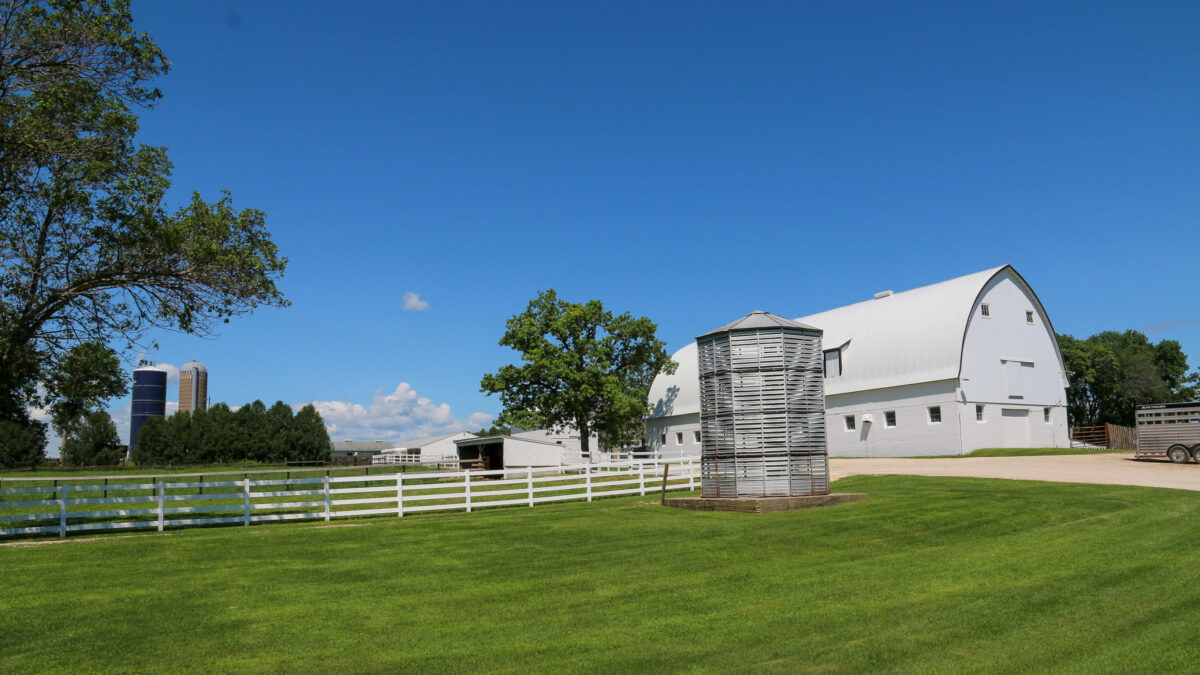
photo credit: Alabama Farmers Federation, Used with Permission
John Newton, Ph.D.
Former AFBF Economist
Most agricultural economists and policy wonks saw this coming. USDA’s September 2020 farm income projections suggested net farm income (a broad measure of farm profitability across the entire farm sector) would reach $103 billion this year, up 23% from the prior year and the highest level since 2013’s record high.
That was before the second $14 billion Coronavirus Food Assistance Program and before new crop inventories began to shrink as the outlook for U.S. agricultural exports improved, i.e., China and Phase 1. Assuming those export sales are realized, USDA’s December 2020 Farm Income Forecast confirmed what many expected -- nominal net farm income in 2020 will reach nearly $120 billion, up 43% from 2019 and the second-highest of all time. Yet, farm cash receipts from crop and livestock sales are down $3 billion and the lowest since 2016. Today’s article reviews USDA’s most recent farm income projections.
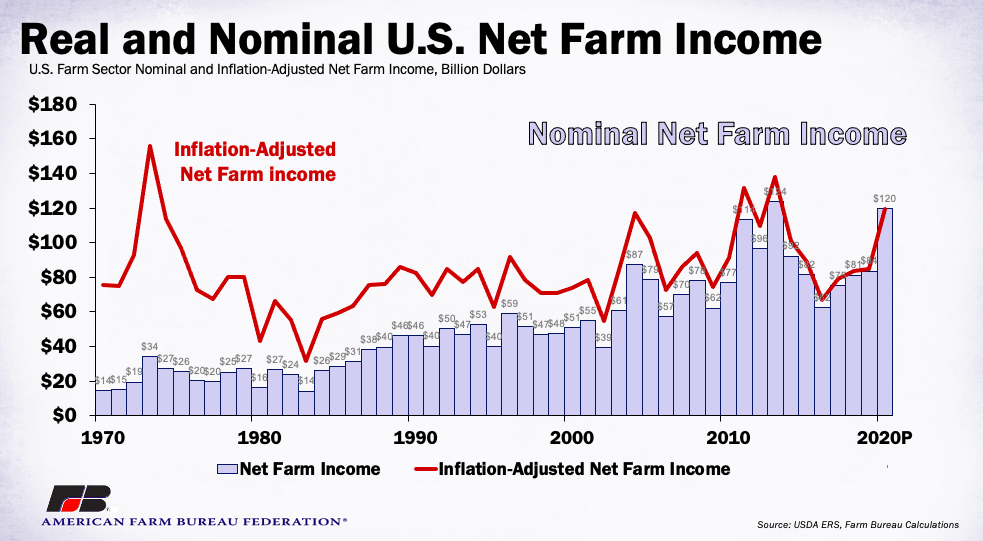
2020 Farm Income and Expenses
While farm profitability will certainly be higher in 2020, it’s a false positive. Farm cash receipts from the sales of all crop and livestock commodities are now projected at $367 billion, down $3 billion, or 1%, from 2019. Cash receipts this year will be the lowest since 2016 and they remain $57 billion less than the $424 billion in cash receipts received during 2014. There has been some relief in production expenses, which, at a projected $344 billion, are down $5 billion, or 1%, from 2019 and the lowest since 2011.
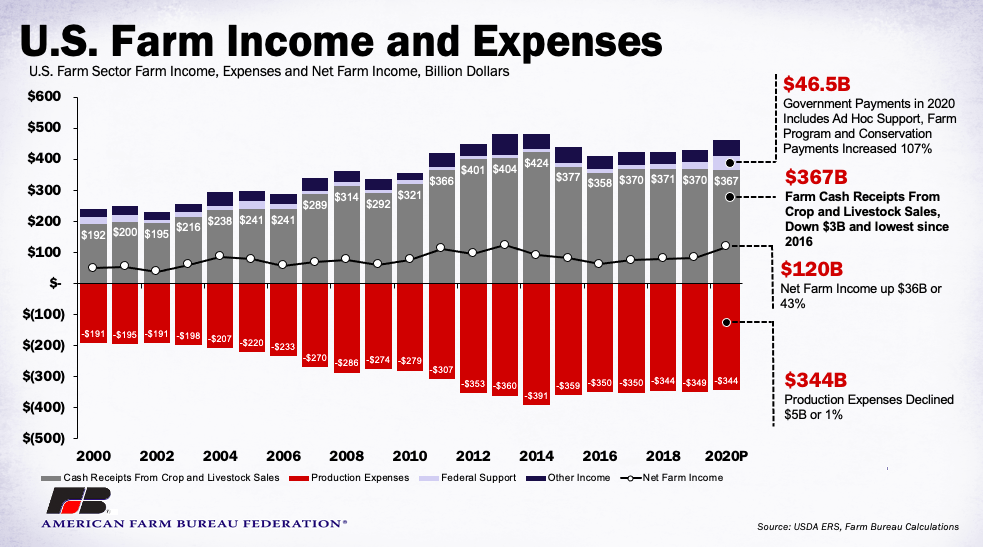
Driving farm income in 2020 is $46.5 billion in federal payments including those provided through farm bill and conservation programs, as well as ad hoc support related to Chinese retaliatory tariffs, natural disasters such as wildfires and hurricanes and now the COVID-19 pandemic.
Importantly, Congress authorized many of these ad hoc disaster programs well before the late-season rally in commodity prices driven by the improved outlook for U.S. agricultural exports to China, e.g., U.S. Census data shows China bought a record $4.8 billion in agricultural products during October 2020. It is clear this federal support has helped agricultural producers and the multiplier effect will also likely help boost rural economies and may contribute to a decline in family farm bankruptcies during 2020.
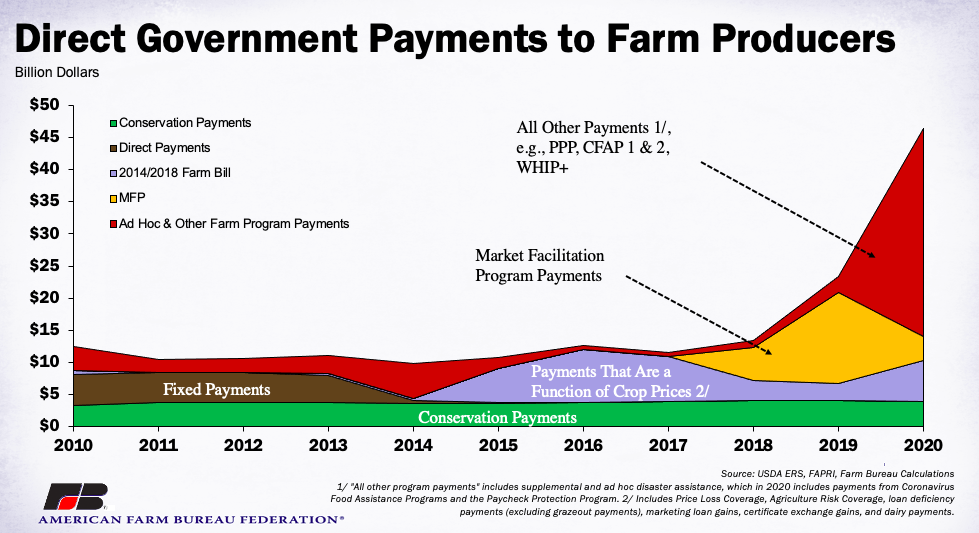
When removing federal support from net farm income (for demonstration purposes only), farm-related net farm income totals $73 billion, which is up $12 billion from 2019, but $40 billion below 2013’s record high. Federal support as a percentage of net farm income in 2020 is now projected at 39%. Federal support as a percentage of gross income is now projected at a record 10%. The obvious question many are asking is: “What’s next?”
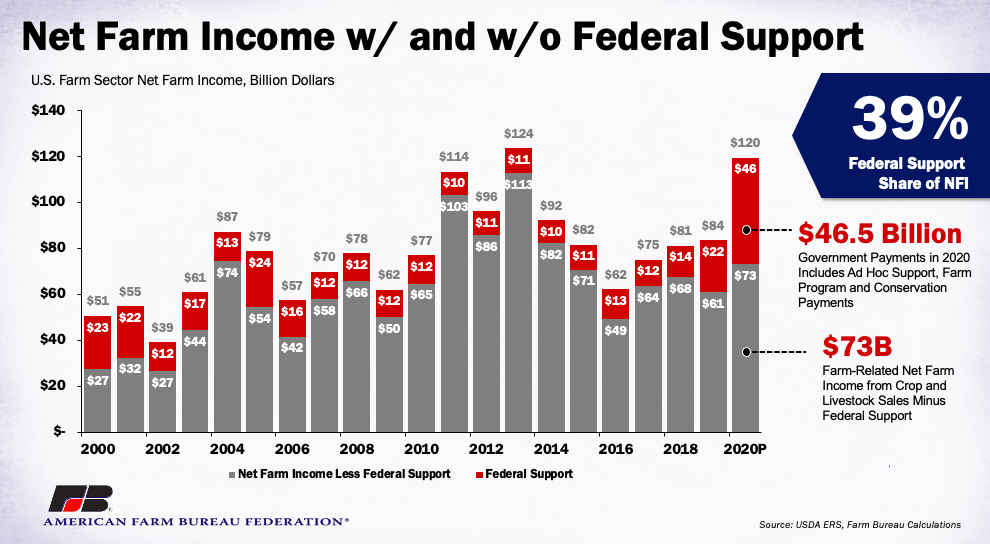
Farm Income for 2021 is Very Uncertain
To boost farmers and ranchers’ net income next year, two things must happen. First, current export commitments not only must continue to increase but also must be realized as export inspections. Continued strength in demand for U.S. agricultural products will help tighten supplies and boost farm-level prices. Second, any future disruptions due to COVID-19 must be minimal and, more importantly, as a vaccine becomes available COVID-19 restrictions must be lifted. Should these circumstances be realized, the U.S. agricultural sector will be on a stronger footing in 2021.
Still, several factors could roil the farm economy moving into 2021. While export commitments are record-high, the cancellation of outstanding sales is possible. This would ultimately lower exports, boost inventory levels and put downward pressure on prices. An improving South American crop could also put downward pressure on U.S. prices. And additional COVID-19 lockdowns could create farm price volatility like it did in the spring.
USDA’s first projection for 2021 farm income and expenses will be released in February. One thing is certain, net farm income (profitability) in 2021 will be lower. Without additional financial support of some sort, federal assistance in the form of traditional farm program and conservation program payments are likely to return to historic levels of $10 billion to $12 billion. Assuming the strength in commodity prices continues and removing a large portion of recent ad hoc support, net farm income is likely to drop down to the $90 billion to $100 billion range, significantly below our current level -- proving that farm income in 2020 is indeed a false positive.
Trending Topics
VIEW ALL